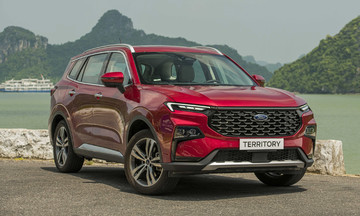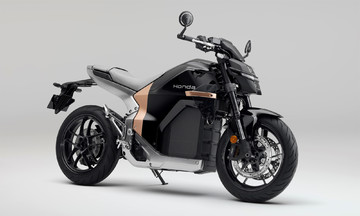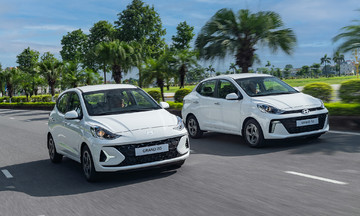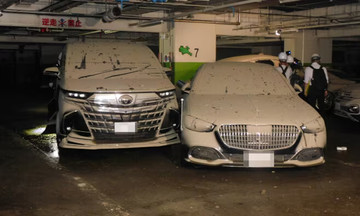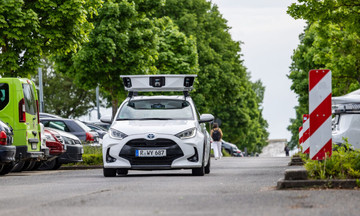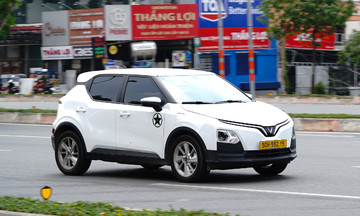On the outskirts of Chengdu, a city of 21 million people, Zcar's dealership offers steep discounts on new vehicles. Domestically produced Audis are 50% off, while FAW SUVs are priced over 60% below sticker price. Zcar has 5,000 vehicles in stock. The reason for this abundance? China has too many cars.
For years, the country has implemented subsidies and supportive policies to achieve its goal of becoming an automotive powerhouse, leading the world in electric vehicles. Domestic automakers have met production targets, but that has created a new problem.
A Reuters investigation revealed that China produces more vehicles than the market can absorb to meet government targets rather than consumer demand. This makes profitability nearly impossible, according to industry executives. Chinese electric vehicles start at under USD 10,000, while in the US, few options are available below USD 35,000.
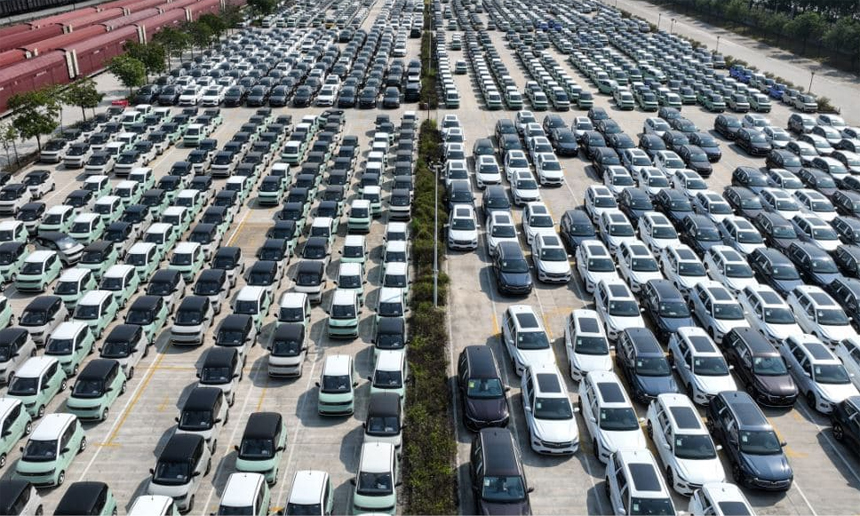 |
A new energy vehicle parking lot at a railway freight transport center in Liuzhou City, Guangxi Province. Photo: Xinhua |
A new energy vehicle parking lot at a railway freight transport center in Liuzhou City, Guangxi Province. Photo: Xinhua
According to an industry survey published last month, most Chinese dealerships are also unprofitable due to excess inventory. Dealers are responding with discounts. Some register and insure large quantities of unsold vehicles, allowing automakers to record them as sold and enabling dealers to qualify for manufacturer rebates and bonuses.
Unwanted vehicles are then sold to black market investors like Zcar. Some appear on TikTok-style social media platforms in fire sales. Others are converted to "used" status—despite zero mileage—and shipped overseas. Some are simply abandoned in weed-filled lots.
These unusual practices are symptoms of a severely oversupplied market and suggest a potential reckoning similar to the turmoil in China's real estate and solar energy sectors, according to industry analysts. Local governments offer cheap land and subsidies to automakers in exchange for production commitments and tax revenue, exacerbating the nationwide overcapacity.
Chinese brands are outpacing foreign rivals in launching new models. However, the same government policies that fueled explosive growth and innovation are now causing unprofitable sales throughout the domestic supply chain.
This simmering crisis has broader implications for the Chinese economy, where the auto industry and related services account for about 10% of GDP. Chinese policymakers previously dismissed overcapacity allegations from US and European officials concerned about cheap imports. But in recent months, Chinese officials have pledged to curb price wars in sectors including electric vehicles and solar energy.
According to consulting firm Gasgoo Automotive Research Institute, Chinese auto plants have double the capacity of the 27.5 million vehicles they produced in 2024. The problem is especially acute for gasoline-powered cars, where demand has plummeted in recent years as Beijing promotes electric vehicles. Meanwhile, the number of electric vehicle factories has surged as companies and local governments rush in. AlixPartners, another consulting firm, predicts that only 15 of the 129 electric and hybrid vehicle brands in China will be financially viable by 2030.
China's price war has entered its third year. Some analysts believe the only way out is for many automakers to go bankrupt. But many Chinese officials oppose this drastic approach, which industry analysts say risks mass layoffs and reduced consumer spending. This leaves automakers and local governments trapped in a downward spiral.
The impact extends beyond Chinese automakers. Foreign brands are struggling to maintain their foothold, accounting for 31% of auto sales in China in the first seven months of this year, compared to 62% in 2020, according to the China Association of Automobile Manufacturers (CAAM). Foreign governments, particularly in Europe, are worried that a wave of cheap Chinese-made cars could devastate their domestic industries. The US has virtually banned Chinese cars over national security and unfair competition concerns.
The seeds of this market turmoil were sown in Beijing, where national policymakers, as early as the 1990s, wanted to position China at the forefront of one of the biggest shifts in auto manufacturing since the invention of the internal combustion engine: the rise of electric vehicles.
In 2009, Beijing launched a program to incentivize automakers to produce electric vehicles and encourage consumers to buy them, backed by billions of USD in subsidies.
By 2017, electric vehicles had yet to truly take off. That year, Chinese government officials drafted a master policy plan for auto manufacturing. The 13,000-character document, "Mid- to Long-Term Development Plan for the Automotive Industry," set a production target of 35 million vehicles annually by 2025, nearly double the US's annual sales record.
The Chinese government was grappling with an overheated property market and beginning to clamp down on excess investment. The auto manufacturing plan became a timely alternative economic pillar for local governments reliant on land sales and property tax revenue.
The 2017 plan fueled a race among local governments to attract electric vehicle manufacturers. By 2024, China nearly reached its target, producing over 31 million vehicles, according to CAAM.
Betting on the right automaker could yield enormous returns. In 2021, the government of Changfeng County, Anhui Province, attracted the electric vehicle giant BYD with cheap land. In return, the county, whose main industry is the production of traditional flatbreads, gained a BYD mega-factory.
Over five years, BYD purchased 8.3 square kilometers of land in Changfeng at an average price 40% lower than what other buyers paid, according to Reuters.
In 2023, a year after BYD began production in Changfeng, the county’s economic growth outpaced the national growth rate by 9.1 percentage points. In 2024, it remained 5.6 percentage points higher.
In 2022, smartphone maker Xiaomi began buying land in Beijing's Yizhuang district to build an electric vehicle factory. As of 2024, the company had purchased the equivalent of over 206 soccer fields at an average price 22% lower than what other companies paid for industrial land, according to land sale records. According to the records, the city of Beijing required the factory to generate minimum annual revenue of 47 billion CNY (about USD 6.6 billion) when operating at full capacity.
Xiaomi told Reuters that it followed a public bidding process and received no discounts or preferential treatment for the land. Xiaomi was the only bidder, according to bidding information released by the Beijing municipal government.
In June, Guangzhou officials released a policy document stating that the city aimed to support a maximum of three new energy vehicle manufacturers, including electric and hybrid vehicles, to each produce 500,000 vehicles annually. In return, Guangzhou would award up to 500 million CNY (about USD 70 million) annually to each automaker that builds a new production line and manufactures 100,000 vehicles within three years.
Policy documents show at least six other local governments issued policies between 2023 and 2025 encouraging automakers to increase production.
In May, the Chinese government began warning about the auto price war and unsustainable competition.
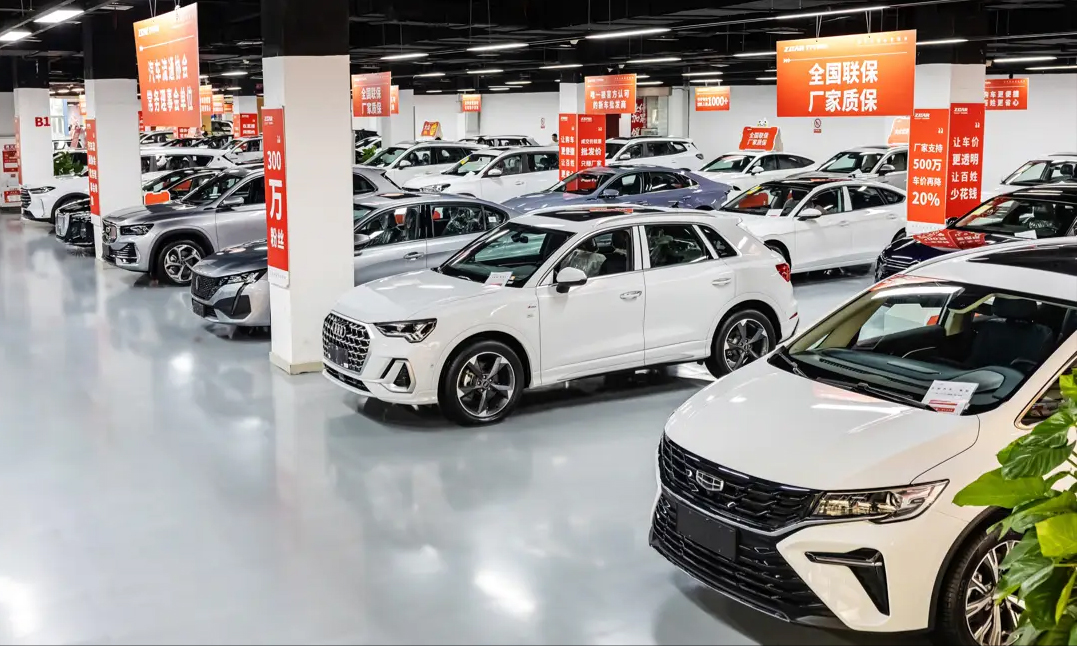 |
A Zcar showroom, which displays and sells new cars that dealerships can't sell. Photo: Zcar |
A Zcar showroom, which displays and sells new cars that dealerships can't sell. Photo: Zcar
Overcapacity leading to overly ambitious sales targets isn't unique to China. In the early 2000s, General Motors, Ford, and Chrysler had too many factories and produced too many cars, eventually closing over a dozen plants in the US.
However, the pressure to meet sales targets and gain market share in China is even greater. Industry insiders recently used the term “spiral” to describe the self-destructive competition encouraging unusual practices.
Car manufacturers in China are driven to continue selling and producing, even at heavy losses, because it secures cash flow, which is key to survival, according to Liang Linhe, chairman of Sany Heavy Truck, one of China's largest truck makers. “It’s like riding a bicycle: as long as you keep pedaling, you may feel exhausted, but the bike remains upright,” he said.
With so many automakers pedaling faster as losses mount, there’s increasing talk among analysts of a shakeout. In recent months, electric vehicle brand Neta ceased operations as its parent company Hozon filed for bankruptcy. In 2024, Ji Yue Auto, a joint venture between Baidu and Geely, cut jobs and announced a restructuring, citing fierce competition.
However, a sudden shock is unlikely: consolidation could take years, and local governments will likely prop up struggling automakers, limiting the fallout. “Overcapacity in China is a systemic problem,” said Michael Pettis, a senior fellow at the Carnegie China research center.
He Xiaopeng, CEO and co-founder of electric vehicle startup Xpeng, predicted in 2023 that each manufacturer would need to sell three million vehicles annually by 2030 to survive—and only eight companies would remain. Xpeng sold 190,000 vehicles in 2024.
A few large companies are hitting or approaching those sales figures and seem poised to benefit from a shakeout. In January, Geely said it aimed to sell five million vehicles annually by 2027, more than double the 2.2 million it sold in 2024.
BYD also set ambitious targets for 2025, though its expansion pace is slowing. In August, its quarterly profit fell for the first time in over three years. BYD scaled back its initial plan to sell 5.5 million vehicles and now expects to sell at least 4.6 million.
In 2024, as state-owned automakers like Changan, Dongfeng, and FAW lagged behind private rivals in the electric vehicle race, regulators declared they wanted state-owned companies to increase market share and output rather than focus on profits.
In July, Changan said it aimed to quadruple its new energy vehicle sales by 2030. "We will strive to become one of the top 10 and world-class global auto brands," Chairman Zhu Huarong said at a press conference on 30/7.
My Anh



